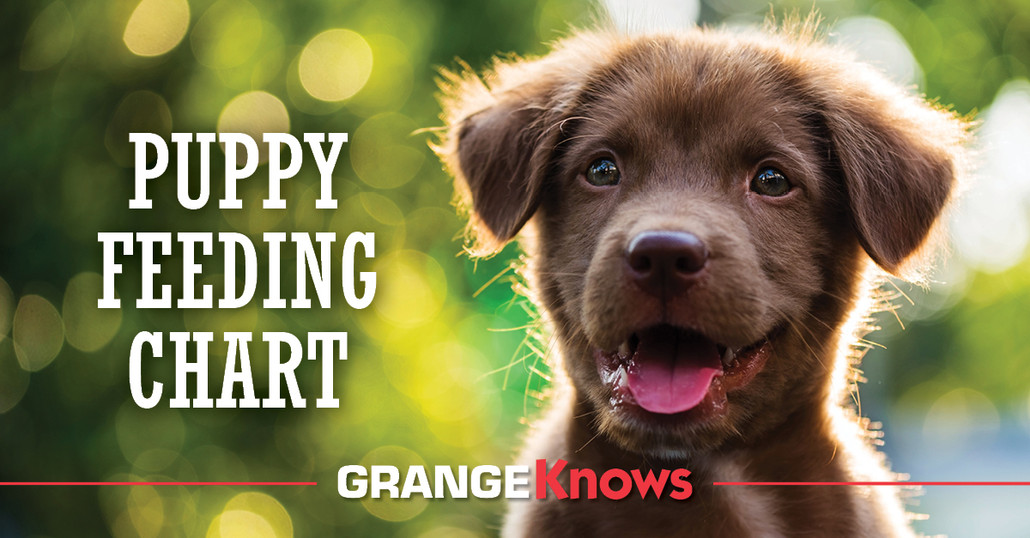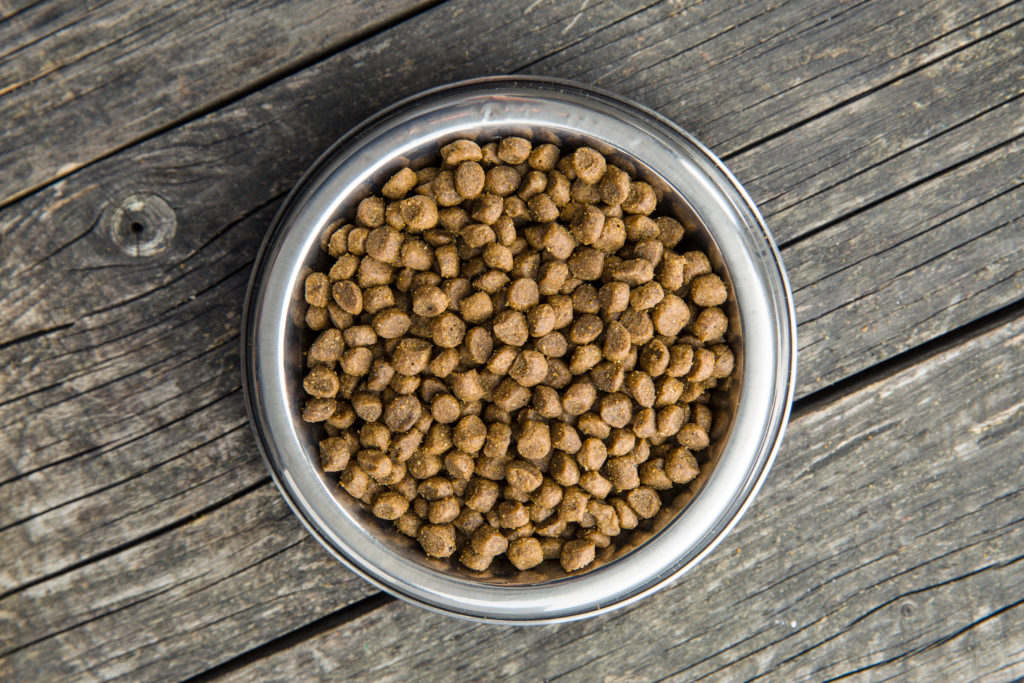
Puppy Feeding Chart
Posted by Grange Co-op on 11th Feb 2025
Are you concerned about how, when and what to feed your puppy? If you are, then your concern is rightly justified. The decisions you make regarding your puppy’s diet and nutrition can have a considerable impact on its growth and development. Giving your puppy high‐quality food will allow it to live a long, healthy life. To help you make the right decisions when it comes to your puppy’s nutritional well-being, here is our complete guide on feeding your puppy, along with a puppy feeding chart.
WHAT TO FEED YOUR PUPPY
Before jumping into how much food you need to feed your puppy, you should be aware of what you should feed your puppy. There are many factors to consider at this point. These include:
NUTRITION
Puppies require specially formulated food containing multiple nutrients to meet their nutritional requirements. They need a balanced diet so that they receive the proper nutrition they require to grow into healthy dogs.

Protein‐rich puppy food formulas are a great option for puppies as it helps support their growing muscles. Carbohydrates provide them with the energy they need to remain active and playful, while calcium supports in the healthy development of teeth and bones. Moreover, DHA present in the formula helps support in the development of a healthy brain and vision.
SIZE OF THE BREED
A large breed puppy will need a large breed‐specific puppy formula, whereas small puppy breeds can benefit from small breed‐specific formulas. However, despite the size of the puppy’s breed, the food should be balanced for the growing pups.
The difference between the formulas is mainly due to the unique nutritional requirements of small and large breeds. Larger dogs are faced with the potential risk of joint problems due to their size, so large breed puppy formulas help supply them with additional nutrients to support their joints. On the other hand, small breed puppies prefer munching on smaller kibble since it is easier to chew. Moreover, it also provides them with all the nutrients they need. Smaller breed puppies also have a higher metabolic rate, which is why they require more nutrient‐dense and higher‐energy food.
TYPE OF FOOD
When it comes to feeding your puppy food, dry kibble is usually the popular choice. However, it is not the only available option as you also have wet puppy food. This choice can make it difficult to decide the right food for your puppy. However, you don’t need to fret. As long as both wet and dry formulas are complete and balanced, you can feed them to your pup without any hesitation.

You also have the option of feeding your puppy a combination of both. However, you need to make sure that the combined amounts don’t exceed your puppy’s daily calorie intake. Never take the risk of overfeeding your puppy as it can lead to obesity. You should rather focus on helping it maintain an ideal body condition as it grows.
PUPPY FEEDING TIMELINE
Here’s is a brief puppy feeding timeline to help you get through the first few months of feeding your puppy.
6-13 WEEKS
This period is critical for your puppy’s growth and development. So, you need to make sure that you feed your puppy a specially formulated and balanced diet to meet all its nutritional needs. If you feed your puppy adult food at this stage, it may not get some of the essential nutrients that it requires.

Giving your puppy four feedings a day is usually enough to meet their nutritional demands. Moreover, you should feed your large breed pups unmoistened dry food when they turn 9 or 10 weeks. Also, you can give the same dry food to your small breed pups by 12 to 13 weeks.
3-6 MONTHS
Once your pup hits the 3‐month mark, it is recommended that you reduce its feeding from four to three a day. This is done to ensure that your pup loses its pudginess and potbelly by 12 weeks. If your puppy is still chubby by this age, keep feeding it puppy‐sized portions until it matures.
6-12 MONTHS
During the 6 to 12 month time period, you should feed your puppy only twice a day. At this point, your puppy is spayed and neutered, which lowers their energy requirements. So, after this procedure is done, you can switch from nutrient‐loaded puppy food to adult food. Puppies belonging to small breeds can usually make this switch at 7 to 9 months, whereas big breed pups can make the switch at 12 or 13 months. The golden rule to remember is that it is better for your pup to remain on puppy food for a longer period of time rather than switching too soon.
AFTER AGE 1
After the age of 1, it is recommended to feed adult dogs 2 half‐portions a day.
PUPPY FEEDING CHART
Here is a puppy feeding chart to better guide you about how much food you should feed your puppy per day. As always, we advise following any recommendations by your vet.
| Weight of Dog | 6-12 Weeks | 3-4 Months | 5-7 Months | 8-12 Months |
|---|---|---|---|---|
| 3 – 5 lbs | 1 – 1 1/3 cup | 3/4 – 1 cups | 1/2 – 3/4 cups | 1/2 – 2/3 cups |
| 5 – 10 lbs | 1 1/3 – 2 1/2 cups | 1 – 2 cups | 3/4 – 1 1/2 cups | 2/3 – 1 cups |
| 10 – 20 lbs | 2 1/2 – 4 cups | 2 – 3 1/2 cups | 1 1/2 – 2 2/3 cups | 1 – 2 cups |
| 20 – 30 lbs | 4 – 5 3/4 cups | 3 1/3 – 4 1/2 cups | 2 2/3 – 3 2/3 cups | 2 – 2 3/4 cups |
| 30 – 40 lbs | 5 3/4 – 7 cups | 4 1/2 – 5 2/3 cups | 3 2/3 – 4 1/2 cups | 2 3/4 – 3 1/3 cups |
CONCLUSION
While the puppy feeding chart is usually helpful, it does not apply to every dog. As a dog owner, it is crucial for you to keep a check on your dog’s weight and body condition. This will help determine how much food you should give to your dog. You may need to feed it a little less or more depending on its current body condition. So, make sure you talk to your veterinarian to see if your dog is at a healthy weight or not!
If you’re looking for great food options for your puppy, visit our website or find a Grange Co-op nearest you to discuss your puppy's needs with one of our knowledgeable team members!
